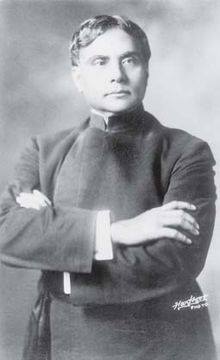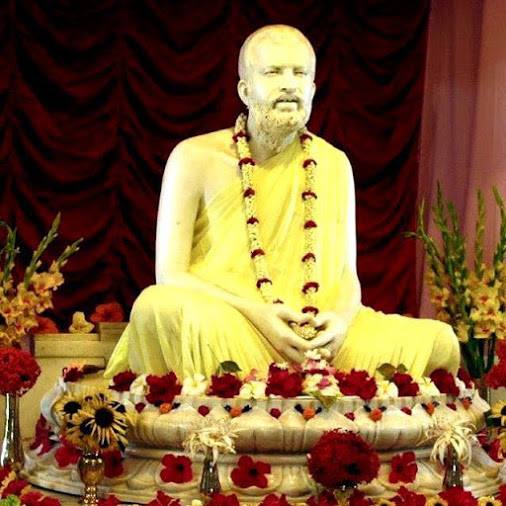Lord Rama’s Life-An Unique Analysis - Swami Chidananda.
-------------------------------------------------------------------------------
--------------------------------------------------------------------------------
Saturday, August 21, 2021. 6:33. AM.
---------------------------------------------------------------------------------
Among the specific objectives of Lord Rama and His Avatara Lila upon earth, here are the two that are most important to mankind.
On the secular side Lord Rama lived and acted in order to hold aloft before mankind for all times a noble ideal of the correct pattern of human conduct, character and behaviour in all contexts of diverse human social relationships.
On the spiritual side the entire unfolding of the Ramayana epic is meant to serve as a revealment of the inner process of the descent and ascent of the human spirit or the story of the individual soul’s bondage and liberation. This is its esoteric content. This is also explained in other versions of the Ramayana.
Thus the advent and the earth Lila of this Avatara constitutes a call to ethical idealism in our earthly life and to spiritual liberation in our cosmic life. This is precisely what the Ramayana and Lord Rama should mean to human society. This is what the worship of Lord Rama, devotion to Him and adoration of Him should imply to His devotee (Bhakta) and to the Sadhaka who looks upon Lord Rama as his Ishta Devata. Devotion to Lord Rama is devotion to virtue and Dharma and spiritual life and Sadhana.
It includes adherence to Sadachara, pure moral character, virtuous conduct and behaviour. It includes resolute effort to move towards spiritual liberation and divine illumination. It stands for sincere effort for attaining union with God. The concept of Rama-Rajya is significant not merely for human society as a whole but it is also equally significant for the individual human being as well. Establishment of Rama-Rajya is the establishment in your own life of the two important principles of Dharma and Divine Wisdom.
Sita’s imprisonment in Lanka by the ten-headed Ravana is in fact the Jivatma’s bondage in individualised ego-personality made up of the ten senses (five Karmendriyas and five Jnanendriyas). This captivity, in this gross-human-physical-mental consciousness has brought about our separation from the Universal Soul or God. This is the painful separation of Sita (Jiva) from Lord Rama (Paramatma). This lost contact is restored only by the Guru who is the link between the Lord and the bound individual being. In the Ramayana narrative Hanuman (Guru) brings the glad tidings of the Lord and helps in ending this unbearable separation between the two. Total annihilation of the body-idea or identification with the gross physical personality (Dehadhyasa) is the condition pre-requisite to this union. Thus Sita is made to undergo the fire-ordeal before Sri Rama takes Her back.
The original cause of falling into the state of bondage is succumbing to the glittering attraction of outer appearance (the golden deer) due to lack of discrimination (Avichara) and the consequent ignorance (Avidya). The golden deer is the epitome of this world of Nama-Rupa (name and form) and the attraction of this creation or projection of Maya which Maricha stands for. He and his assumed Mriga (deer) form is this Mriga-Marichika (mirage) of this world-appearance whose illusion deludes the Jiva bringing on captivity, bondage and estrangement from Universal Consciousness (Rama). Sita’s sorrow-ridden sojourn in the hostile surrounding of Rakshasas in Lanka is the Jiva’s pitiable plight amidst the Asuric forces of this materialistic world of disease, pain and death.
The way out of this painful bondage is to practise a ceaseless, continuous remembrance of the Lord together with an intense longing for being united with the Divine once again. This was the Sadhana manifested by the noble souled Sita during Her captivity at the Ashoka-vana in Lanka while at the same time firmly resisting all flattery, blandishments and temptations held out by the unethical Ravana. Resolutely turning away from enticements, refusing to give way before threats, Sita keeps Her mind and heart steadfastly fixed upon the Divine Rama and thus succeeds in invoking His Grace which manifests itself in the form of His personal messenger Hanuman (Guru) who once again renews the lost contact between the Jivatma and the Paramatma. Where there is sincere aspiration and earnest Sadhana there the Grace of the Lord comes in abundance and rescues the Jiva from its state of bondage and bestows upon it the supreme good for- tune of Kaivalya Moksha (Rama Pattabhisheka Samrajya) granting the Jiva the coveted state of eternal close proximity with the Divine.
Sri Rama is Maryada Purushottama. Embodying in His personality the many sided ideal of the correct human conduct and deportment. He stands before the whole mankind as a noble and worthy exemplar of moral rectitude and ethical propriety in human relationship and human behaviour.
As a son, He nobly upholds the honour of His father and the fair name of His royal family by sacrificing His personal advantage, prestige and status. As an elder brother He presents before Bharata and Lakshmana a perfect model of restrained and gracious charitable reaction in the face of a most vexing and aggravating situation. As a true partner-in-life to His wife Sita who insists upon accompanying Him to the forest, He wisely recognises Her claim upon Him and concedes to Her the right to come to Her own decision and choice in electing to share with Him the joys and sorrows and hazards of the jungle life. Because, the wife is an equal partner to the husband in the matrimonial life of the Grihasthashrama!
As an individual in society Rama instantly reciprocates the friendship offered by Guha-nishada and takes him into the warm embrace of His divine friendship without the least consideration of the difference in their status, upbringing and background. Royalty mingles freely and lovingly with primitive jungle simplicity in instant appreciation of the genuine goodwill and friendship extended by the Guha. Rama’s sense of gratitude is of such a degree that as a gesture in response to Jatayu’s self-sacrifice in defence of Sita, the noble Rama performs the last rites to the dead Jatayu as He would have done to His own father. His life and conduct as an ascetic in the forest leading a Tapasvin’s life of perfect self-control, moderation, celibacy and austerity is a model life worthy of any man of penance and meditation.
As a warrior upon the battle-field Rama’s chivalry and fairness shines as a noble example for all times. Having totally disarmed Ravana during one of their early encounters Rama could have forth-with taken his life. But instead He requests His adversary to pick up his weapons and go home and rest and come again the next day with fresh strength. Ultimately His supreme personal sacrifice uphold His Raja-Dharma has no parallel in history. May modern human society be uplifted by the inspiration of Rama’s lofty ideal!
On the occasion of holy Ramanavami we must engage ourselves in the contemplation of Lord Rama and the special significance of His life to us personally. We should thus engage in devotion, prayer and meditation and reap a rich spiritual harvest of bliss, purity and blessedness. May Lord Sri Rama shower divine grace upon us all. Om Sri Ram!
End.
=========================================================================







Comments
Post a Comment